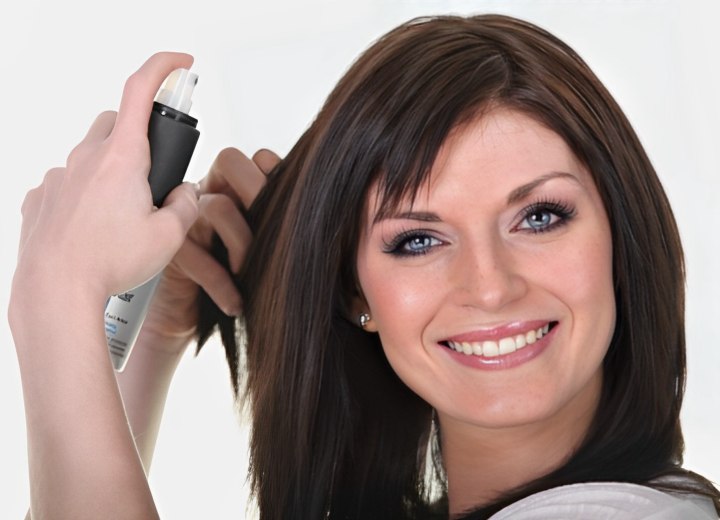Aerosol and Non-aerosol Hairspray

A: When it comes to function, hairsprays are all the same. At least, they serve the same functions: to hold the hair in a specific style by using resins and polymers that “glue” the hair into place.
The precise formulas will vary from light hold to very strong, humidity-resistant sprays. There are those designed to hold without becoming stiff and sticky, and those that will make the hair rigid and windproof.
Nonaerosol hairspray is packaged as a liquid, usually in a bottle with an atomizer attachment (such as a pump-sprayer). The pump sprayer uses springs, valves and tubes to mix the liquid with small amount of air and emits the liquid as small droplets propelled in short bursts. Unless the pump mechanism malfunctions, you can generally use the non-aerosol hairspray until the liquid inside is used up.
There are different schools of thought as to which is better when talking aerosol versus non-aerosol hairsprays. Aerosol sprays used to commonly contain compounds which were released into the atmosphere as spray cans were used. These were referred to as chlorofluorocarbons and the chlorine and bromine in these compounds were harmful to the ozone layer of our atmosphere. Because of this, aerosol hairspray gained a negative reputation temporarily.
Today’s aerosol hairsprays have no chlorofluorocarbons, and do not affect the ozone layer. Because of this, the choice between aerosol and non-aerosol hairsprays is largely a matter of preference. Just bear in mind that aerosols can generally provide a finer mist of hairspray in delivery, and this can be better suited to certain hair types and finishes (namely fine hair types and soft, high-volume looks).
Nonaerosols offer more control and generally longer-lasting product (meaning it doesn’t get used up as quickly) and are great for styles that are meant to be very structured and sleek or defined (such as using it to smooth stray hairs in a braided style, or to add definition to curls).
©Hairfinder.com
See also:
Does hair spray go bad and when do hair sprays expire?
Should you add hair spray before or after you style your hair?